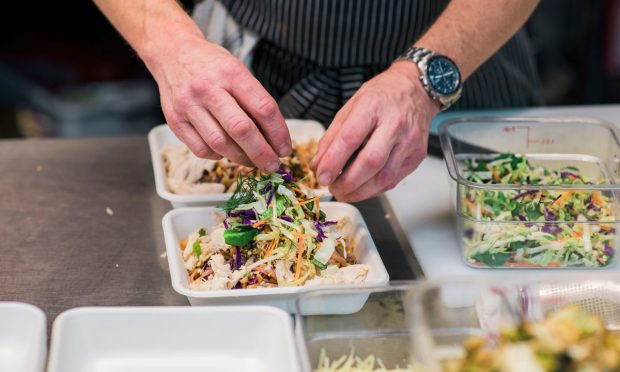Virtual Restaurants Are Evolving Beyond the Need for Aggregators

The virtual delivery-only restaurant model may have been made possible in large part by aggregators, whose marketplaces made it possible for restaurants to develop a customer base without a physical storefront. However, as digital marketing tools have grown more sophisticated, virtual restaurants are growing increasingly able to build their own relationships with consumers through direct ordering channels.
“I see a lot more people interacting directly with their restaurants, either through websites or apps, or believe it or not, some of our clients still get a lot of call-in orders,” Rishi Nigam, CEO of virtual restaurant solutions provider Franklin Junction, told PYMNTS in an interview. “I think that will lead to a new twist on how loyalty is created, which will be pretty exciting to see — how we battle for people in the online world differently than when we have them in a captive audience space inside our restaurants.”
Already, digital loyalty programs are going a long way toward guiding consumers to restaurants’ direct channels, according to data from PYMNTS’ November study, “Digital Divide: Aggregators and High-Value Restaurant Customers,” created in collaboration with Paytronix.
Read more: Restaurants Fight Back Against Aggregators With Promotions and Loyalty Programs
The report, which drew from a census-balanced survey of more than 2,200 U.S. adults about their digital ordering habits, found that 42% of restaurants’ highest-value consumers — the 25% of restaurant customers who spend an average of more than $40 per purchase and order from restaurants at least once a week — are motivated to use direct channels because of restaurants’ loyalty programs.
Make It or Break It
While many of the industry insiders most bullish on virtual restaurants tout the model’s capacity to make it possible for more people to open restaurants with a lower barrier to entry, Nigam said he believes that this view may be setting newcomers up for failure.
“This idea that … anybody can go create a brand … while it’s cool that people have a lot more access to great brands, I also think that it’s also going to be financially damaging to a lot of people to go down that road,” he said.
Instead, he said he thinks emerging concepts would be better served to partner with existing brands until they are more established. Granted, it is not particularly surprising for Nigam to express this view, given that Franklin Junction works with a range of major brands such as Nathan’s Famous and Dickey’s Barbecue Pit.
He argued that the resources and experience it takes to successfully train a staff, prepare high quality food, create compelling packaging and marketing, and maintain customer relationships likely would not be available to new entrants to the space.
Additionally, he noted that, given that these newer brands tend to have to rely on aggregators for customer acquisition, they do not have access to vital information, such as feedback or complaints, adding that these third parties create something of “a wall between” brands and their customers.
Stick to the Status Quo
Two such under-equipped newcomers he highlighted are Gopuff and Instacart, asserting that their entrances into prepared meals categories are likely not to be able to hold their own against established restaurants and restaurant aggregators.
Read more: Gopuff Launches Hot Meal Service Using Mobile Kitchens
See also: Instacart Aims to Price out DoorDash With Launch of Meal Delivery
“You see people like Gopuff and Instacart wanting to get involved in taking restaurant business away and saying, ‘Buy prepared meals from us,’” he said. “I think buying groceries that you’re going to prepare at home is very different than buying food that is actually prepared directly for consumption.”
He predicted “a lot of challenges” and “negative feedback from consumers,” arguing that the companies do not possess sufficient knowledge of how to assemble and package foods for hot meal delivery.
Go Big or Go Home
While food delivery remains challenging from an economic standpoint — consumers chafe at the high fees, while businesses struggle with the labor costs — Nigam said he believes that, as the channel continues to grow, it will reach profitability.
“Scale is a big part of it,” he said. “As we grow, and there’s more customers and more delivery available, eventually rates can go down.”
As evidence, he cited retail’s transformation decades ago. While in the late ’90s, businesses were just beginning to sell online, by the mid-2000s, eCommerce had reached a scale that “we would never have imagined” just years before. He said he sees the restaurant industry as being at a similar inflection point.
Additionally, he said he expects that, as demand continues to remain elevated, “democratization of the technology behind delivery” will force a change, prompting services to leverage innovations, such as navigation tools and robotic solutions, to achieve greater efficiency.
“It’s going to take some time before the economics of delivery makes sense, but we’re all banking that the technology will catch up to it, and that the scale will continue to grow,” he said.
